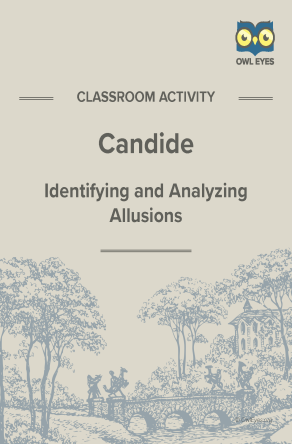Candide Allusion Activity
- 8 pages
- Subject: Allusion, Literary Devices, Lesson Plans and Educational Resources
- Common Core Standards: RL.11-12.1, RL.11-12.4, RL.9-10.1, RL.9-10.4, RL.9-10.9
Product Description
The 1759 novella Candide is the French philosopher Voltaire’s most enduring work of fiction. It tells the coming-of-age story of Candide, a hapless, naïve young man who lives in the castle of his aristocratic uncle. When Candide is banished from the court for his inappropriate dalliances with his cousin, he must faces the hardships of the real world. In his depiction of Candide’s development, Voltaire alludes to number of classic Western works, including the stories of the Bible and the philosophies of German philosopher Gottfried Leibniz. As Candide develops wisdom and humility, he comes to question Leibniz’s idealistic assertion that we live in “the best of all possible worlds.”
Skills: analysis, close reading, drawing inferences from a text, interpreting implications of allusions
About This Document
The Owl Eyes Allusions activity gives students an opportunity to practice identifying and analyzing allusions. Allusions broaden the scope of a text and imbue passages of the text with deeper meaning by subtly drawing on literature, history, science, geography, philosophy, mythology, or other cultural sources. The main components of this activity include the following:
- A contextualized paragraph of the text
- A handout defining “allusion” with examples from classic works
- A list of tips for spotting allusions
- A step-by-step guide to activity procedure
- An example answer
In completing this activity, students will be able to identify, analyze, and interpret allusions, thereby accessing deeper meanings within the text.







